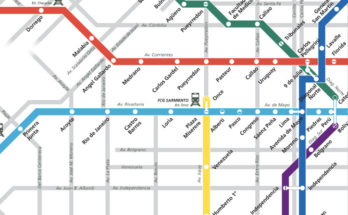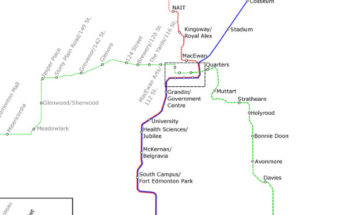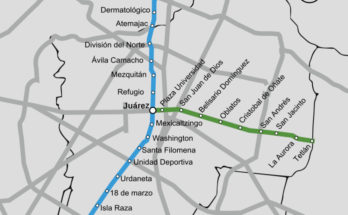The urban rail system in Recife operates three rail lines, two of them electrified and the remaining consists of diesel, light rail type trains VLT. Its total length is 68.8 km. Metro Recife serves municipalities of Recife, Jaboatão dos Guararapes and Camaragibe Cabo de Santo Agostinho. It has 35 stations and transports 244,900 people a day.
Metro Recife
The Metro Recife, opened in 1986, is part of the Sistema Estrutural Integrado (SEI), which is a public transport network system composed by bus lines in addition to the metro lines. All these lines are integrated via terminals specially constructed to allow multimodal travel connections. The SEI is a mass transit system configured by zones arranged in rings. Access from the suburbs to the integration terminals is possible because of the 10 operating companies, responsible for 185 lines serving ten municipalities in the Metropolitan Region of Recife or Greater Recife.
The management of this system corresponds to the Companhia Brasileira de Trens Urbanos (CBTU), a semi-public company created in 1984 and under the supervision of the Ministry of Cities since 2003. Thise compnay is responsible for management of several passenger transport systems in capitals of several regions of Brazil, including Recife Pernambuco state capital.
Recife metro lines and stations
Center Line, electrified, linking Recife with Camaragibe through Jaboatão dos Guararapes. It splits in Coquiral to reach Camaragibe, through Rodoviária Station. Afogados stations, Mud, Cavaleiro, Camaragibe, Jaboatão and Rodoviária are integrated terminals. The Center Line is 25 km long and has 29 stations (15 to Camaragibe and 14 Jaboatão).
South line, also an electrified line corresponds to two municipalities, Recife and Jaboatão dos Guararapes. With 11 operating stations, ranging from Recife to Cajueiro Seco. Integrated Terminals are Joana Bezerra and Aeroporto.
Diesel Line, VLT, serving three municipalities: Recife, Jaboatão dos Guararapes and Cabo de Santo Agostinho and 9 operating stations. The Integrated Terminal is Cabo.
Main stations: Recife station
It is the central metro station in Recife. Located in the São José neighborhood in the old city center, it was opened in 1994 after rehabilitating the old railway station. Near this station there are several tourist attractions such as the House of Culture and the Museu do Trem. From there depart five circular bus routes to access various parts of the city.
Hours and frequency
All electrical lines operate between 5:00 am and 11:00 pm.
The Diesel line runs between 5:00 am and 8:00 pm. On Saturdays until 2:00 pm.
Billetes y tarifas
Fares for Integrated Structural System rings are: A – R $ 2.45, B – R $ 3.35, D – R $ 2.65, G – R $ 1.60.
-
Optional services:
- 042-Airport, R$3.
- 072 Candeias,R$ 4,60
- 160 Gaibu-Barra de Jangada, R$ 4,60
- 195 Recife-Porto de Galinhas, R$ 12,00
Discounted rates on Sunday, from 5 o’clock in the morning:
A -R$ 1,20, B -R$ 1,70, D -R$ 1,20, G -R$ 1,20.
Single tickets are purchased at the counters of every station. Then you need to validate them in slots when passing to the platforms. With this ticket, plus an integrated one, you can make connections with Integrated System Buses.
International Airport Gylberto Freyre
The station closest to the Airport Recife is the Aeroporto Metro station, which is also an Integrated Terminal. It runs from 5:00 am until 11:00 pm.
The entrace to the metro station is located opposite to gate B6. The ticket costs R$ 2.15 to get downtown.
Metro Recife Video
This post is also available in: French German Spanish Portuguese (Brazil)



